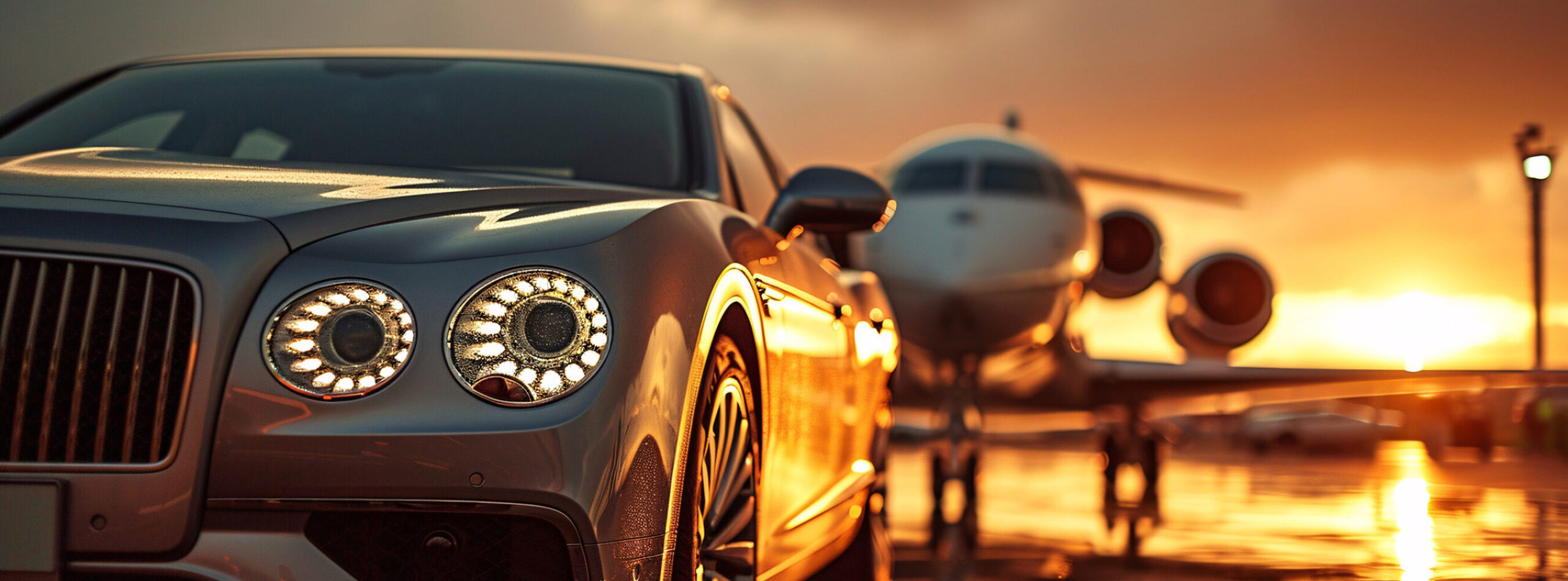Immersive Factory Tour System for Bentley Hosts and Customers
Immersive Factory Tour System for Bentley Hosts and Customers
Bentley Motors is one of the world’s most prestigious and well known automotive brands. They are one of the few companies that still prides themselves on the hand craftsmanship of their vehicles. As part of their unique offer, they showcase their work through in person tours of their state of the art 4000 person facility in Crewe, England.
However, only a select few make it to Crewe, if you’re in China, the Middle East, Australia or the US, it may be hard to travel to the North of England. Therefore, for those busy schedules, a closer to home experience is needed – the Virtual Factory Tour.
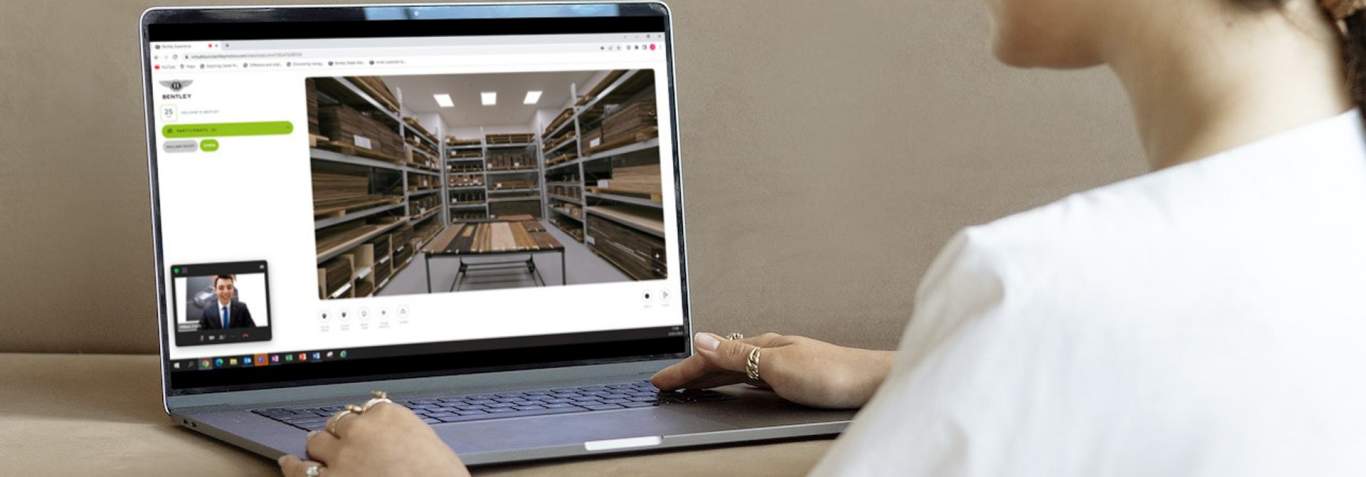
The new experience is designed to mimic the real experience of visiting the factory – you are guided by live hosts and able to look around different scenes in the factory using 360-degree video technology. The experience is built to allow for a free flowing tour where the hosts dwell on areas of interest or move quickly through the facility depending on the customers’ interests.
Along the way you meet and see interviews with key Bentley colleagues, each of them explaining the precision craft needed to collaborate on creating Bentley Motor vehicles.
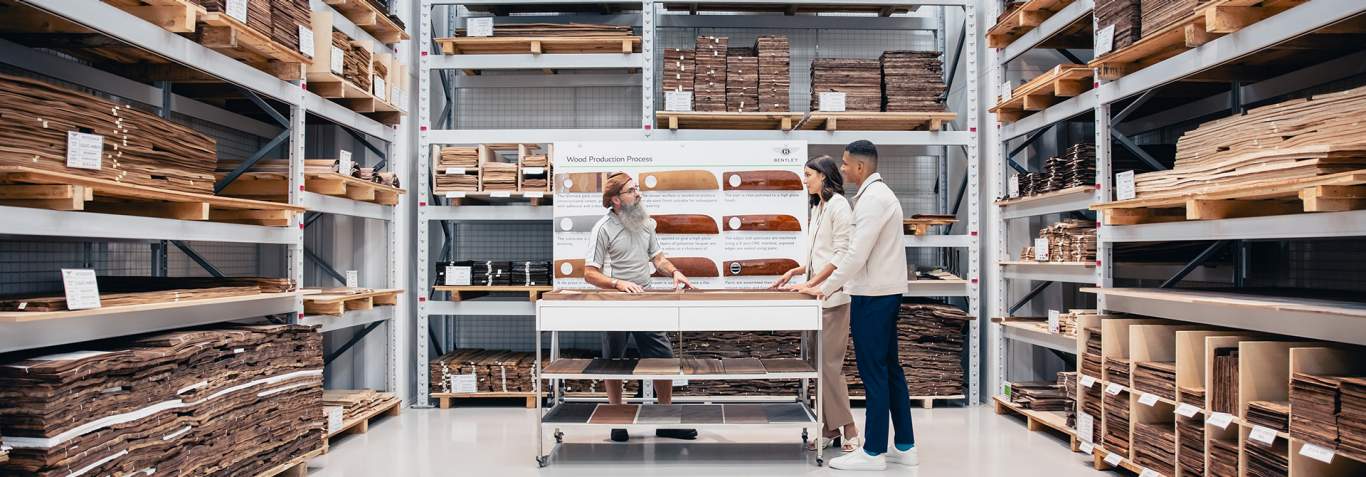
The goal in creating this innovative virtual tour system is to merge video conferencing software with a web-based 360-degree virtual tour. By bringing these two technologies together for the first time, it allows the personal connection gained through video conference to blend with the freedom of curiosity that 360-degree video presents. This means a customer can have a conversation with a real person, whilst navigating and looking where they want, all from the comfort of their own environment.
To begin, we developed two unique user interfaces for the experience, one for the host to be able to control the tour, and one for the customer to experience the tour.
Host UI
The host’s view is designed to balance seeing the active scene with having all other areas accessible in the quickest way possible. As the host uses the active scene to narrate the tour and keep track of the guests, it needs to remain the focal point of their experience. Whilst below, all the additional scenes are sorted into their relevant areas and ordered as per the logical progression through the manufacturing process. This way, the host can both use the order of the areas as a guide to their narrative, but also quickly and easily find the next scene they are looking for, keeping their delivery and the customer experience as smooth as possible.
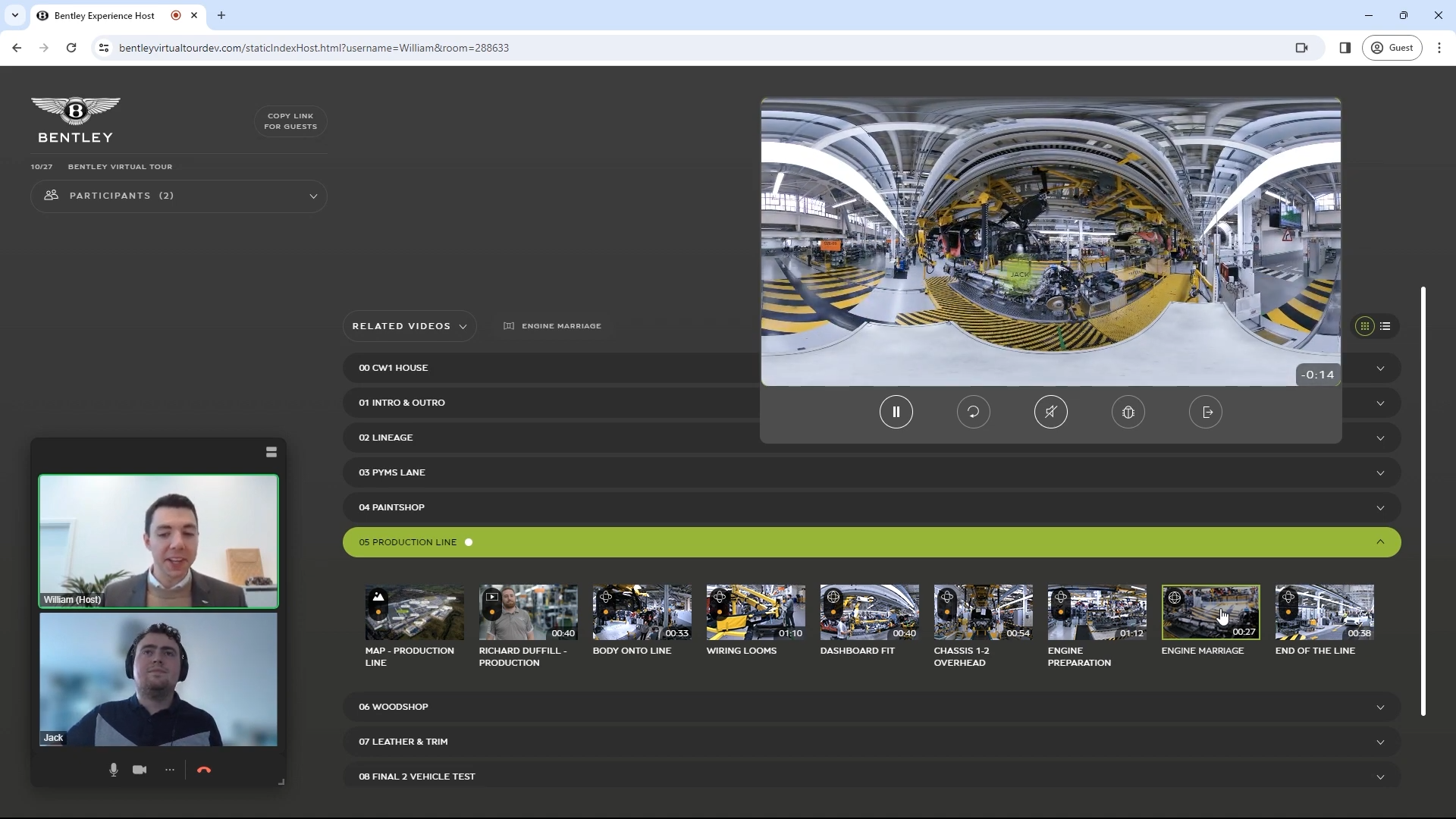
Through the main scene window, the host is able to keep track of where the customers are looking through live positioning data. As the customer moves their view around the 360-degree video, that positioning information is fed back through to the host, presenting as a bold hotspot on their view. This indicator on the equirectangular image allows the host to ensure that all customers are focusing on the relevant areas of the scene, and not getting distracted by other areas of the factory they will soon learn about.
To continue their narrative, the host may choose to use the ‘attention focus’ feature which automatically moves all the customer views to a single point of interest of the host’s choosing. Either to bring back attention, or gently point guests in the right direction; a simple click on their equirectangular active view will move everyone to that point. Having a tool like this for the host means they can ensure that all users in a tour are staying on track and not drifting too far.
As well as these features, the host’s have a variety of other tools to help them conduct compelling and engaging tours. Video and audio controls are especially important for the hosts to be able to pause time and allow the customer to soak up the scene, as well as enabling factory sounds to fully immerse the viewer in a chosen scene.
And finally for the host, the scene navigation area is organised to best tell the Bentley story. Each subsection is used to sort the ideal narrative to conduct the tour, breaking free of any limitations that the physical tour may hold due to access to specific areas. Each thumbnail comes with a few simple icons to help visually illustrate the type of scene the host may select. Static or Dynamic 360’s, or even 16-9 videos are all clearly marked so the host is able to seamlessly introduce what the customer is about to see.
All of these subtle icons help give the hosts confidence that each scene has the correct behaviour and contents they expect, whilst a simple orange dot allows the host to easily see which scenes they have already visited on this tour to prevent any accidental duplication.
Customer UI
For the customer, the focus of the virtual tour is the factory experience. This means that in designing their user interface, the scene content must be the biggest and most important area of their screen. Nothing should distract from seeing the tour, so the majority of other elements are positioned outside of the main viewport. The customer can click and drag, or zoom in and out, of the 360 video to navigate within the scene view. This is where the customer can explore the factory and engage with the tour in a new and refreshing way.
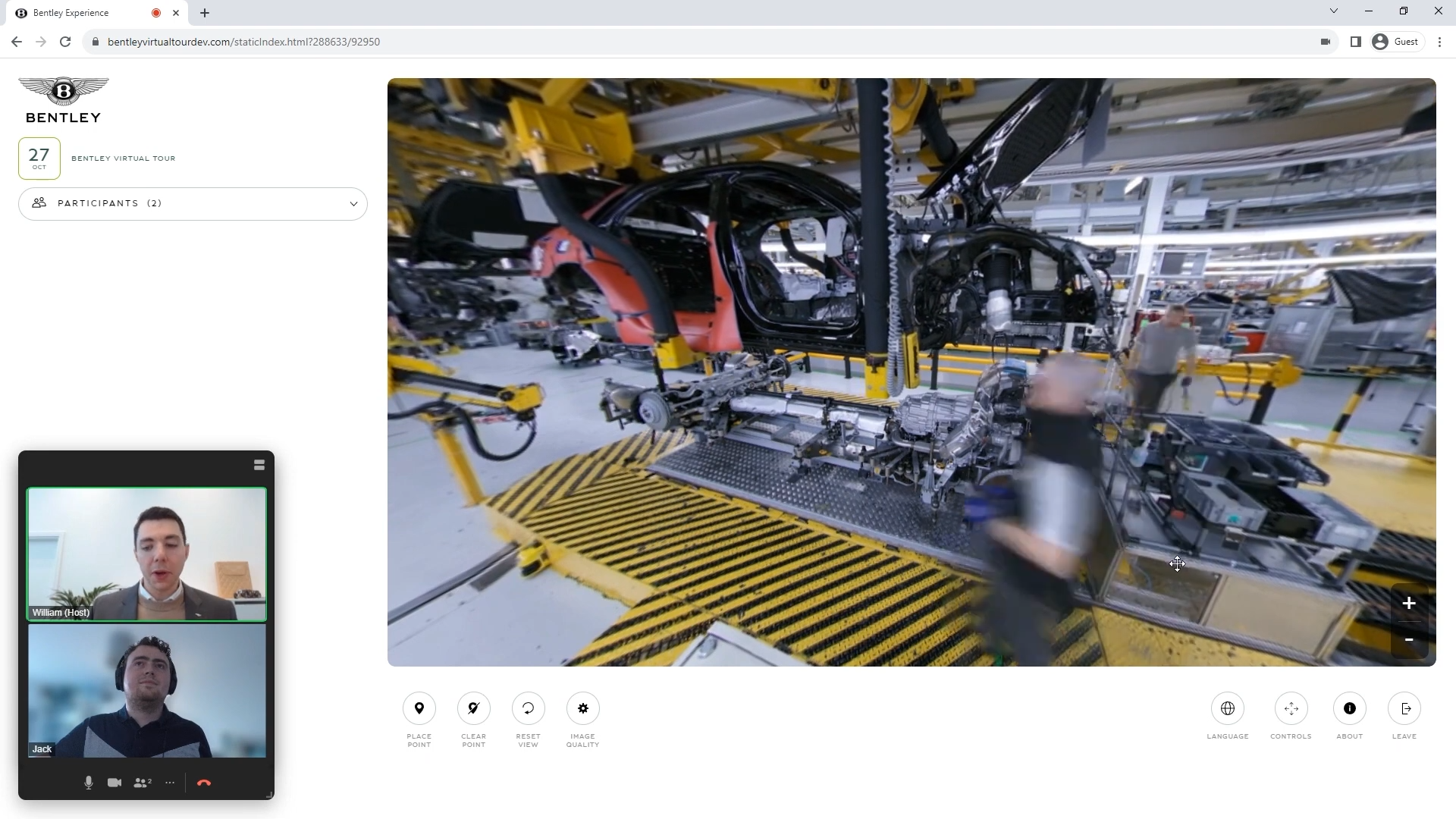
Outside of this main window sits the supplementary buttons and information to the tour, including the Zoom video conferencing window. Here, the customer can see themselves and the host. We found that people are a lot more comfortable in video conferences if they can see themselves, therefore it was important to ensure adequate space in the UI to have one’s own camera view, as well as that of the host.
The customer also has the ability to place a virtual marker within the scene to draw the hosts attention to something. This acts as a virtual ‘point’ like you would do in real life, the customer can place their point and it will immediately appear on the host’s screen, allowing their conversation to develop in a natural way around the areas that customer is interested in.
Content
In addition to the user interface, the other key aspect of creating an industry leading virtual tour was to ensure the quality of the captured content is the best it can be. By using the Meta 3, 360-degree camera, the factory was captured in 12k with high dynamic range and extreme clarity. By using this best in class technology, we are able to show even more detail in the 360 video than has been possible previously. As this video is now being streamed directly from the servers to the customers device, it means that we can push the quality to its limit, beyond what is possible with the screen sharing from the pilot programme. All the videos have been optimised for streaming, delivering high quality 360-degree video to all customers.
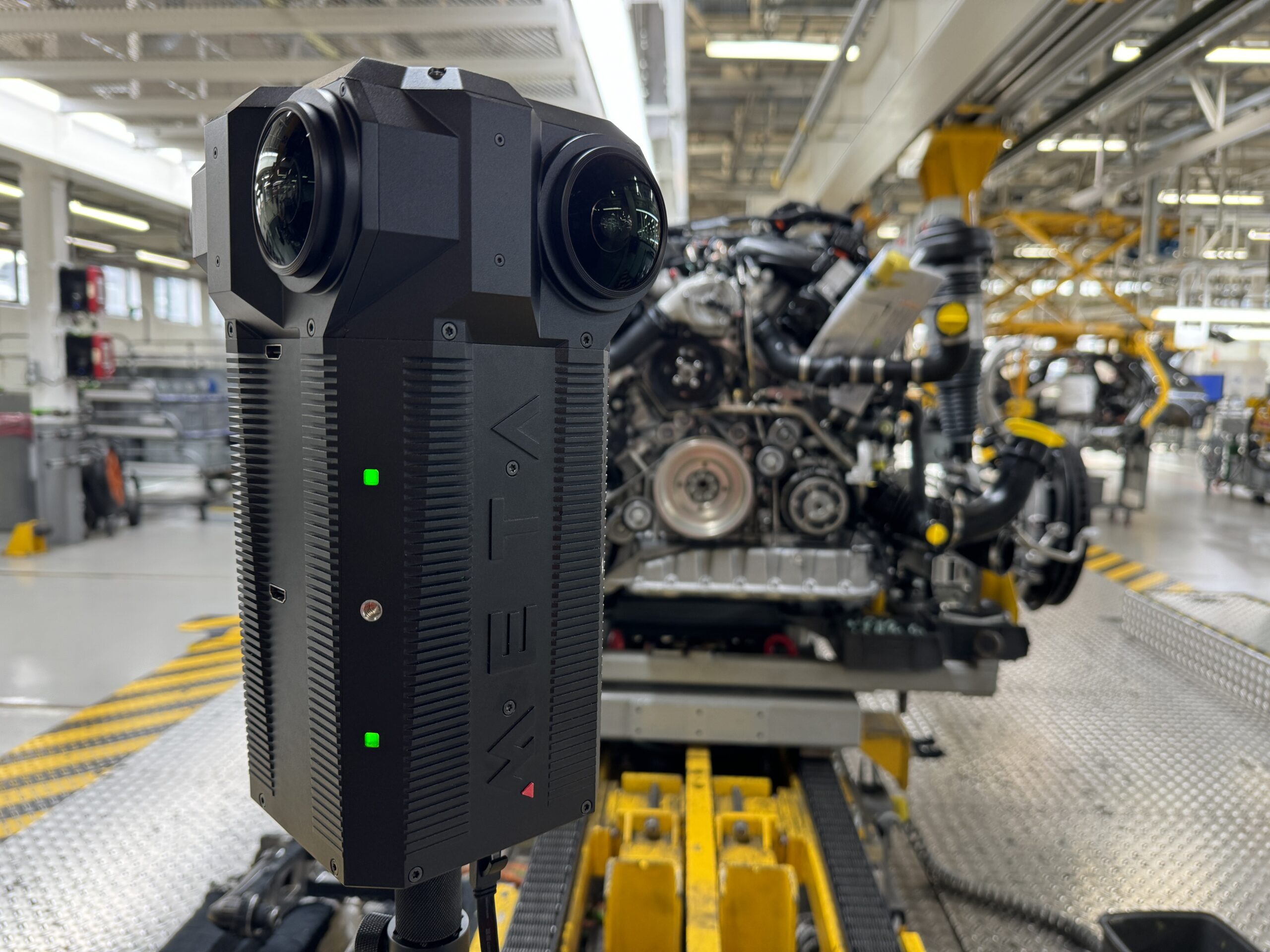
Booking system & languages
One of the key aspects of the virtual tour 2.0 was to ensure the scalability of the solution. We needed to move away from a specific hardware and software streaming setup, to a truly universal platform that can be delivered and accessed from anywhere, by any host. Creating the whole platform to be web-based, it means that tours can now run in parallel to each other, with hosts located all around the world, whilst being accessed from basic laptops of any specification.
Language options also diversify the tour to a global audience, having the experience translated into key international languages means it can be delivered by native speaking hosts to a customer in their own language.

The Bentley virtual tour is a one of a kind system that has been specifically crafted for Bentley’s needs in the same way a custom coachbuilt car would be made to specification for a customer. It gives all of the control and depth of experience that the hosts need to tell the Bentley story and immerse customers in the history and narrative of this incredible brand.

